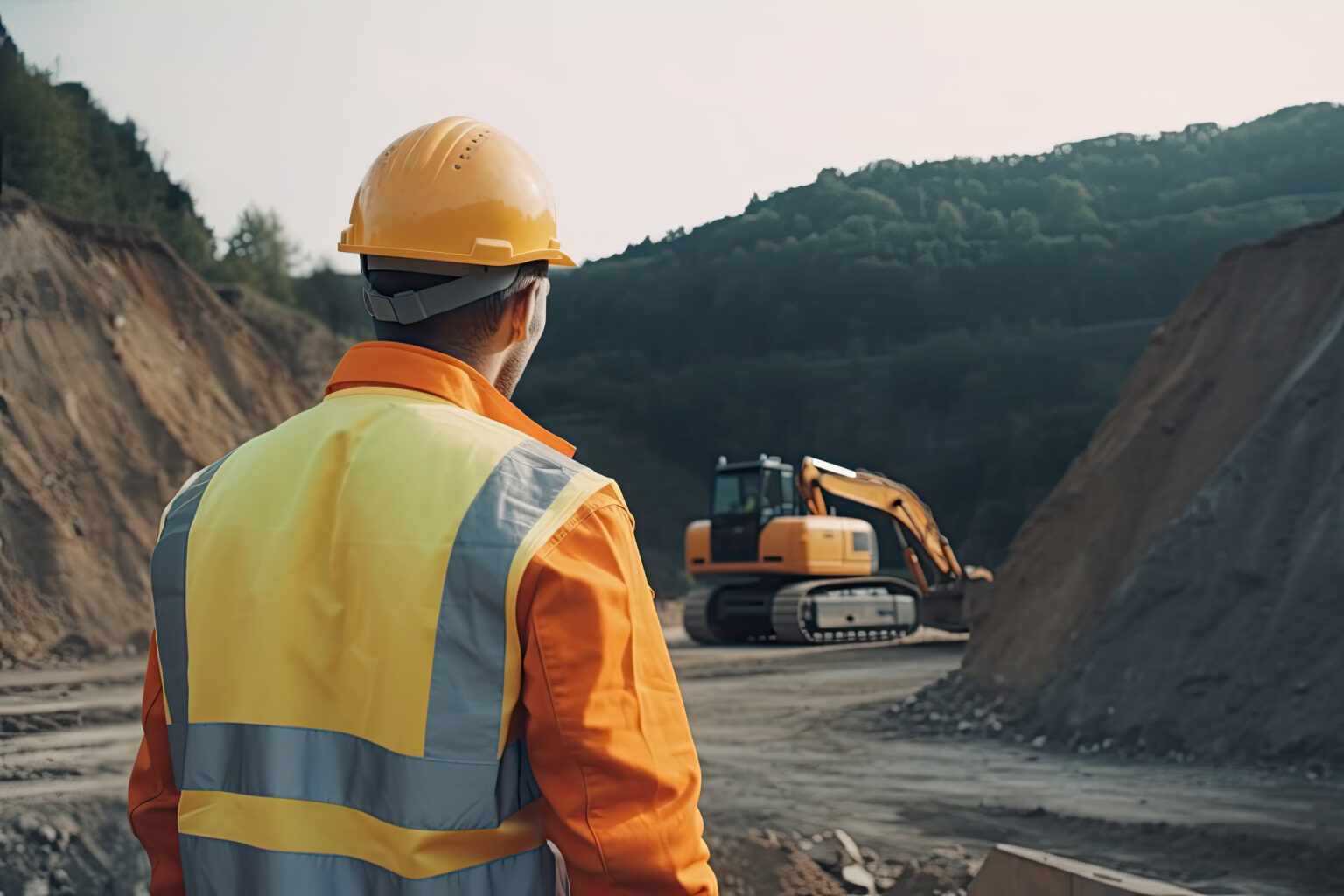High-visibility jackets (also referred to as hi-vis jackets) are not only a practical choice but also a legal requirement in many labour-intensive industries.
From construction sites and warehousing operations to many other places where workers must remain visible amidst machinery, equipment and poor lighting conditions, these jackets are critical for maintaining high safety standards and preventing workplace accidents.
In this buyer’s guide, we will explore the importance of hi-vis jackets, the different types of models available, the key features to look for when considering your specific use cases, and how to properly maintain your visibility jackets to prolong their lifespan.
Here are the topics we will cover:
- Understanding The Importance Of High-visibility Jackets
- Different Types Of Hi-vis Work Jackets
- Key Features To Look For In A High-visibility Jacket
- Tips For Choosing The Best Hi-vis Jackets For Your Use Cases
- How To Maintain And When To Replace Your Hi-vis Work Jacket
- Your Frequently Asked Questions On High-visibility Jackets
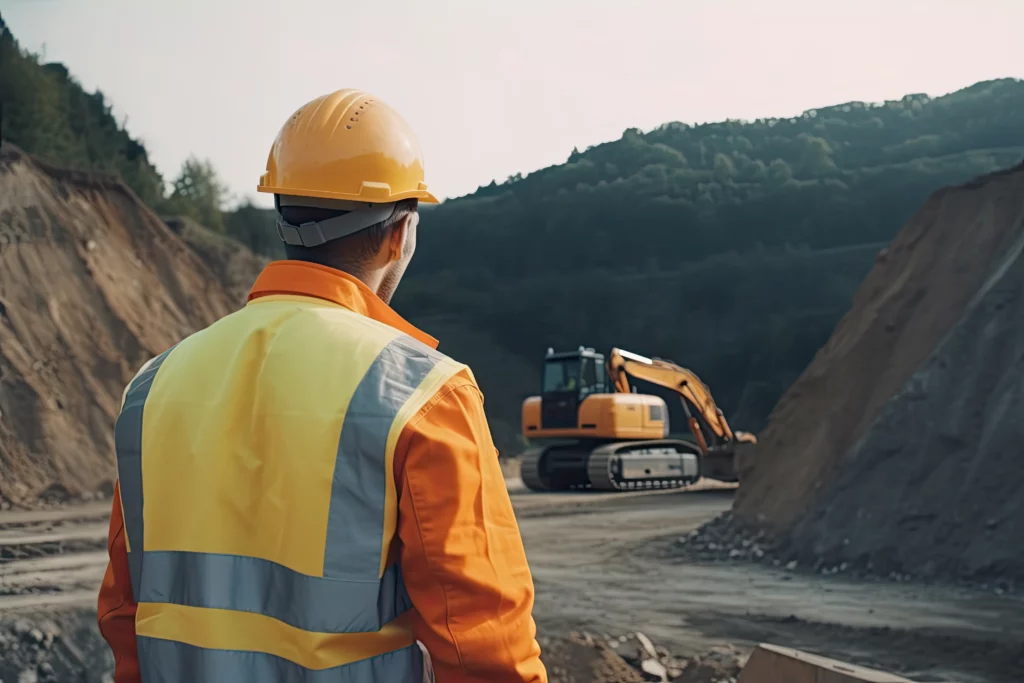
Understanding The Importance Of Hi-vis Jackets
Hi-vis work jackets are designed to enhance visibility and improve safety in various work environments, including construction sites, road maintenance operations, airport tarmacs, and emergency response scenes.
These jackets are specifically designed to stand out, using high-visibility colours that are hard to miss. The most common colours used are fluorescent yellow and orange, as they have been proven to attract attention even in low-light conditions. This increased visibility helps drivers, machinery operators, and colleagues spot workers from a distance, reducing the risk of accidents and collisions.
However, it’s not just the bright colours that make hi-vis jackets effective.
The best high-visibility jackets and vests incorporate reflective elements, such as strips or tapes, that further enhance visibility. These reflective materials make the wearer even more noticeable in situations where direct visibility is limited. Think of scenarios like night road construction, where the glare of headlights can obscure workers, or in foggy harbour settings, where dock workers need to be seen among the hustle of shipping operations.
These reflective elements ensure that workers can be seen from a distance, reducing the risk of accidents and collisions.
In many countries, there are strict legal requirements regarding the use of high-visibility workwear. Regulatory bodies often specify the industries and work environments where hi-vis jackets are mandatory. Furthermore, these regulations often outline specific standards that hi-vis jackets must meet. This includes requirements for the colour and reflectivity of the jackets, as well as guidelines for the placement and size of reflective elements.
That’s why we recommend you familiarize yourself with your country’s regulations on high-visibility jackets and vests before you start sourcing the best models for your workers.
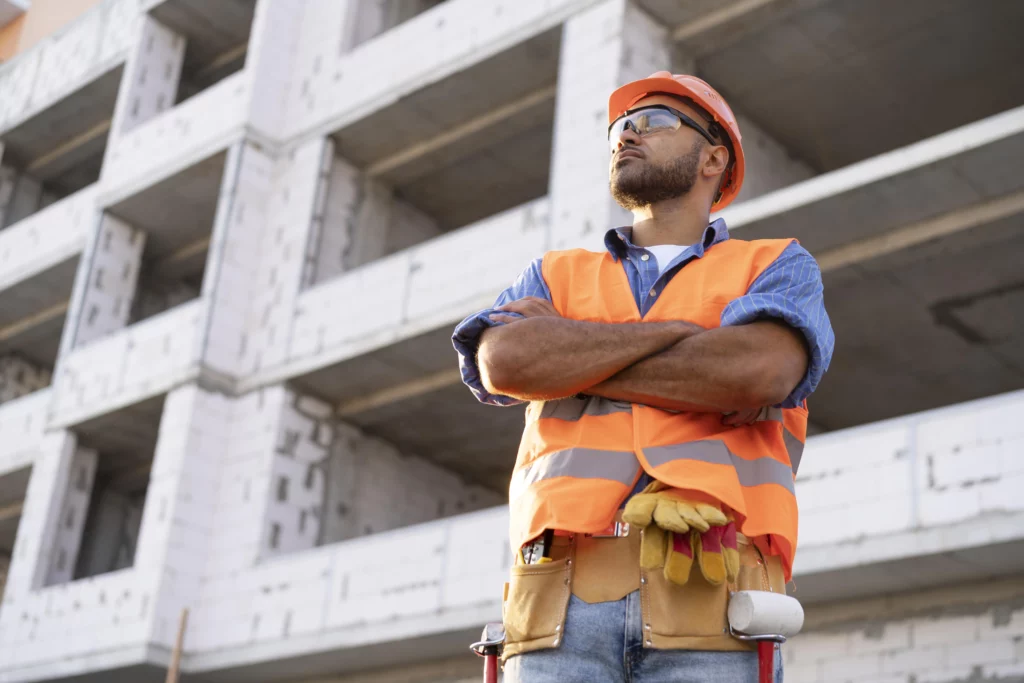
Different Types of Hi-vis Work Jackets
As with all Personal Protective Equipment (PPE), there is a wide range of options and models available, each tailored to specific requirements and work environments.
Here are the main types of high-visibility jackets you’ll find available on the market:
- Insulated high-visibility jackets: These jackets are specifically designed to provide warmth in cold weather conditions. With quilted linings or built-in insulation, they offer a perfect balance between visibility and comfort. Insulated hi-vis jackets are particularly beneficial for those working in outdoor environments during the winter months. Whether it’s construction workers, traffic controllers, or warehouse staff, these jackets will help your workers perform their duties efficiently, even in cold temperatures.
- Waterproof high-visibility jackets: An absolute must-have for individuals working in wet or rainy conditions. These jackets are designed with a waterproof outer layer that not only keeps the wearer dry but also maintains high visibility. Whether it’s road construction, outdoor event management, or emergency response, waterproof hi-vis jackets are essential for those who need to work in challenging weather conditions.
- Flame-resistant high-visibility jackets: Non-negotiable for industries where workers are exposed to fire or heat. These jackets are made from specialized materials that can withstand high temperatures without catching fire. Flame-resistant hi-vis jackets are commonly used in industries such as oil and gas, welding, and firefighting.
Overall, whether it’s insulation, waterproofing, or flame resistance, these jackets provide the necessary safety features without compromising on visibility.

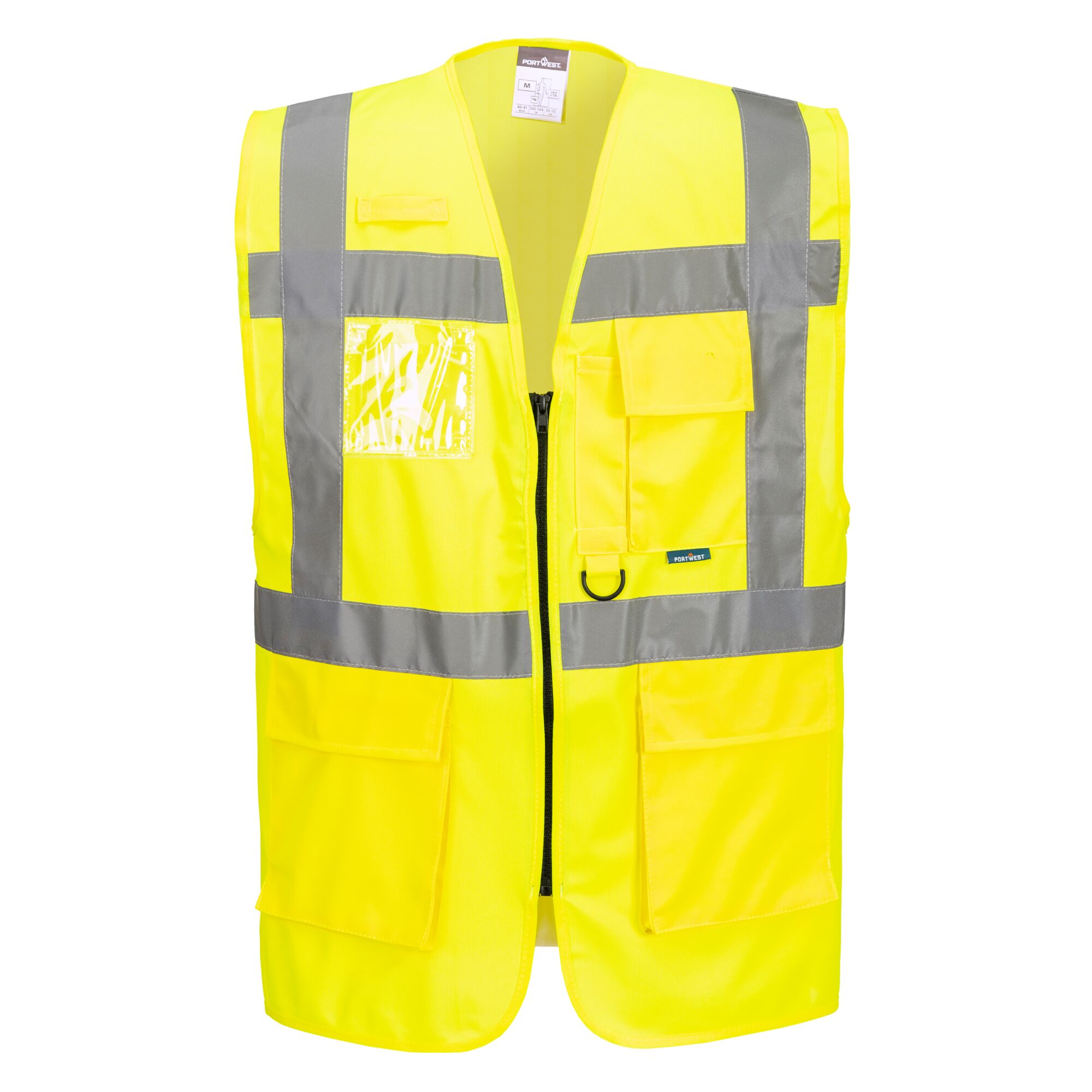
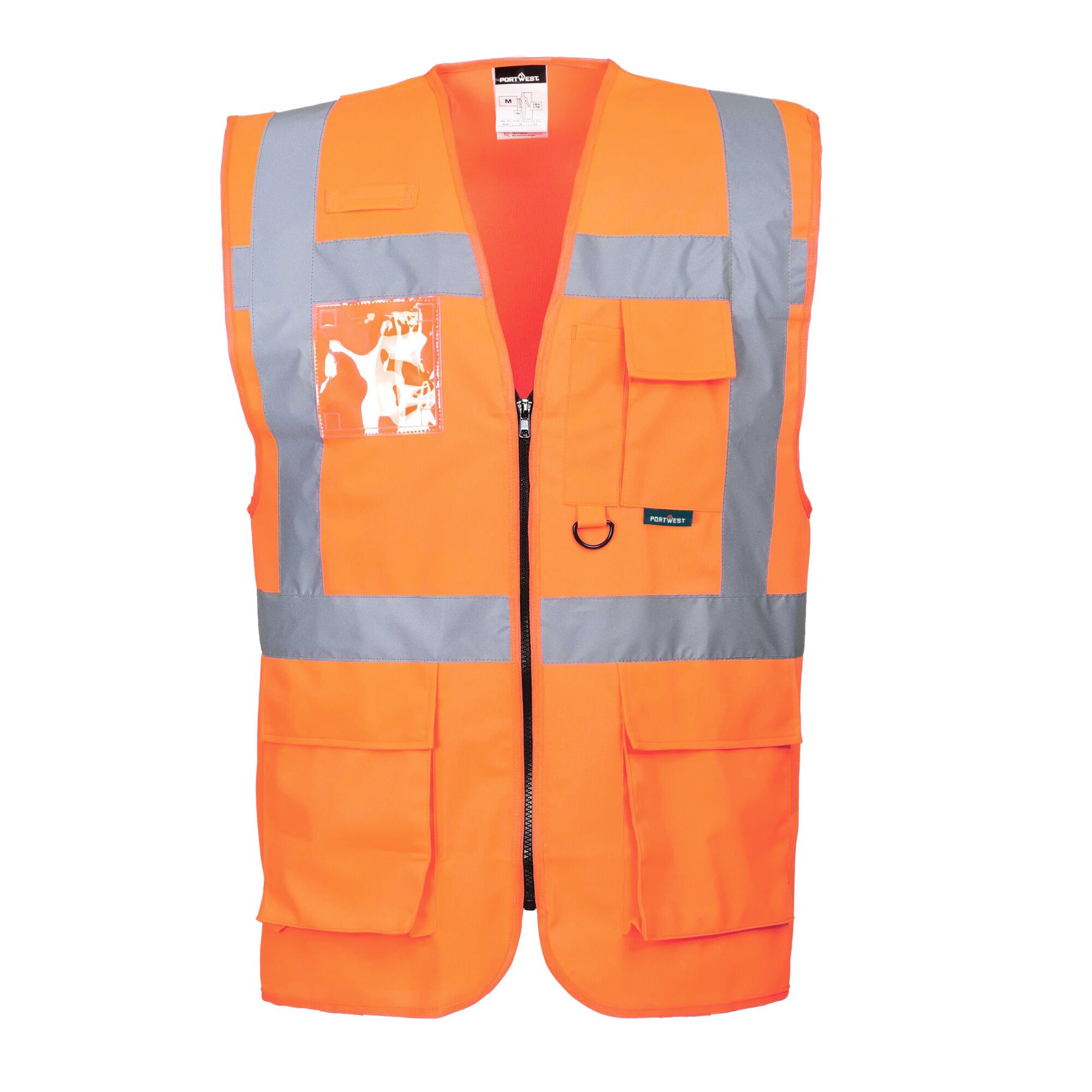
Key Features To Look For In A High-visibility Jacket
Working in hazardous environments requires a high level of visibility and protection, and high-visibility jackets are designed to provide both.
However, not all hi-vis jackets are created equal. So, to help you make an informed decision, here are some additional factors you should consider:
- Material and durability: High-visibility jackets and high-visibility vests are typically made from durable materials such as polyester or nylon. These materials are known for their strength and ability to withstand the strain of day-to-day work activities. Additionally, always look for jackets with reinforced seams and sturdy zippers to ensure longevity. Moreover, it’s important to consider the jacket’s resistance to wear and tear. A hi-vis jacket that can withstand the rigours of your work environment will save you money in the long run, as you won’t have to replace it frequently.
- Visibility and reflective elements: The visibility of a high-visibility jacket or a high-visibility vest depends on both its colour and the quality of its reflective elements. Look for jackets that have bright and highly contrasting colours that stand out, even in challenging lighting conditions. Reflective elements should be strategically placed to maximize visibility from all angles. Ideally, the jacket should have reflective strips on the torso, sleeves, and shoulders. These strips should meet recognized standards for luminosity and reflectivity.
- Comfort and fit: Comfort is a must when your workers must wear their high-visibility clothes for long periods. Look for jackets or vests with adjustable cuffs, waistbands, and hoods to ensure a snug fit. A well-fitting jacket will not only be more comfortable but also provide better visibility and protection. On top of that, consider the climate and level of physical activity involved in your work. Some jackets come with ventilation features such as mesh linings or underarm vents, allowing heat and moisture to escape while maintaining visibility. This can prevent overheating and discomfort, especially in warmer environments or during strenuous activities. Lastly, pay attention to the jacket’s range of motion. A hi-vis jacket that allows your workers to move freely without restrictions will improve their overall comfort and productivity.
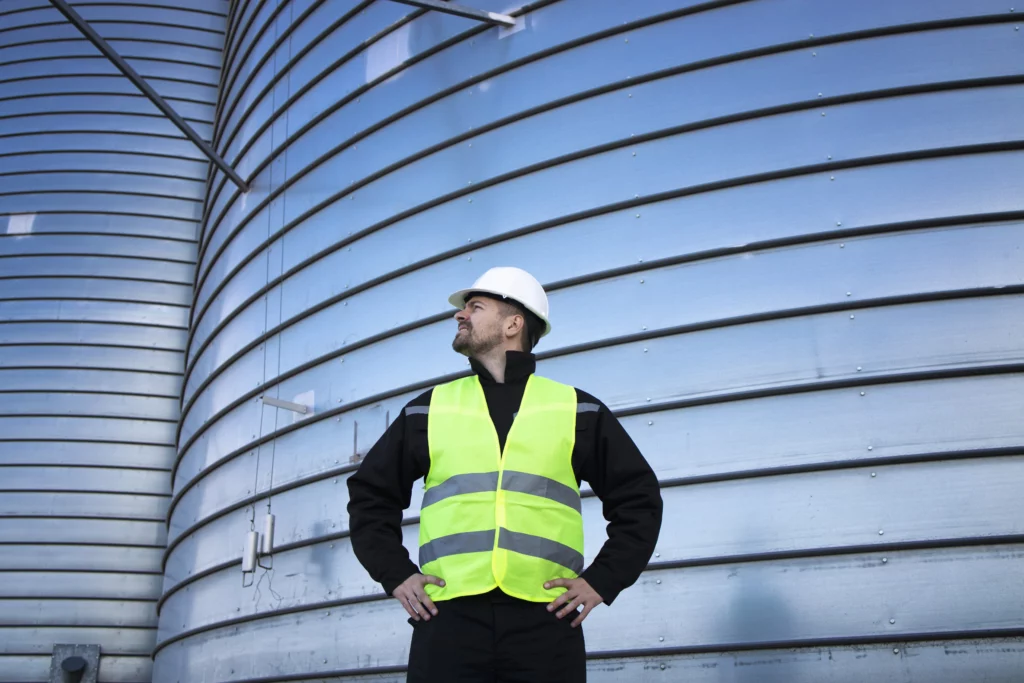
Tips For Choosing The Best Hi-vis Jackets For Your Use Cases
What makes a hi-vis jacket not just compliant, but perfectly suited for your unique work site and use cases?
Here are some key factors you should consider:
- Weather conditions and work environment: This is especially important for those working in outdoor environments where weather conditions can range from extreme heat to cold. If your workers operate in colder climates, you might want to consider buying insulated or waterproof jackets. On the other hand, if your workers operate in an industry with a higher risk of fire or heat, you should prioritize flame-resistant jackets.
- Brand reputation and compliance with safety standards: Always opt for brands with a good reputation and who are known for producing high-quality and safety-compliant products. You can take your time to research different brands and read customer reviews to gauge their reliability and customer satisfaction, or you can take a look at our full selection of high-visibility jackets and high-visibility vests from vetted European suppliers.
- Budget considerations: Like many other professionals tasked with procurement, you operate within financial limitations. Of course, it is important to stay within your budget but keep in mind that the quality and durability of the jackets should be your top priority. While it may be tempting to go for a cheaper option, investing in a higher-quality jacket will ultimately save you money in the long run. If you’d like to receive a personal quote, do not hesitate to get in touch with us and we will provide you with a customized offer as soon as possible – no strings attached.
How To Maintain And When To Replace Your Hi-vis Work Jacket
Selecting the ideal hi-vis jacket for your team marks the initial step. Next, you and your team should learn how to properly maintain the jackets to prolong their lifespan, as well as learn how to recognize when they must be replaced.
When it comes to cleaning, always follow the manufacturer’s cleaning instructions to maintain the integrity of the hi-vis materials. These instructions can vary depending on the specific jacket you have, so it’s important to read and follow them carefully. In most cases, machine washing should be avoided, as it can damage the reflective elements. Instead, opt for a gentle cycle or hand-wash the jacket with a mild detergent. This will help to preserve the visibility of the jacket while still effectively cleaning it. After washing, hanging the jacket to dry is the best option, as this allows the fabric to air dry without any heat or friction that could potentially damage the reflective elements. Additionally, it’s important to note that certain chemicals, such as bleach or harsh solvents, should never be used on hi-vis jackets. These substances can cause irreversible damage to the reflective elements, compromising the jacket’s visibility.
While proper maintenance can help prolong the life of a high-visibility jacket, the visibility of hi-vis materials will inevitably diminish over time due to wear, tear, and exposure to the elements. That’s why it’s important to regularly inspect hi-vis jackets for signs of fading, peeling, or damaged reflective elements.
If you or your workers notice any of these problems, this means it’s time to replace the jacket. Continuing to use a hi-vis jacket with compromised visibility not only puts your workers’ safety at risk but also fails to meet the necessary safety standards required for high-risk work environments.
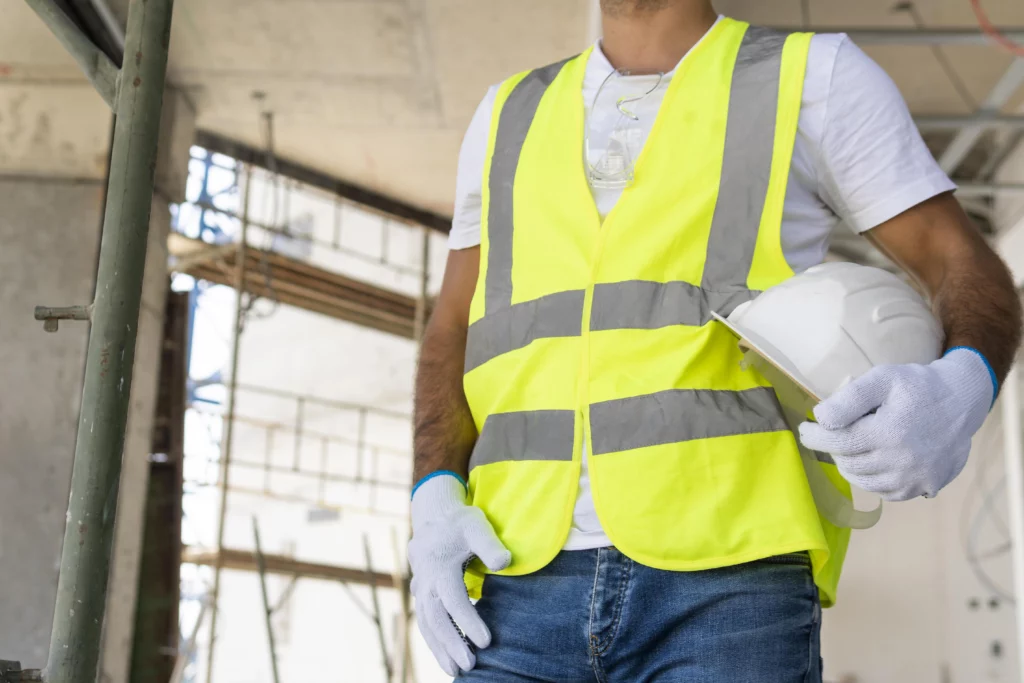
Frequently Asked Questions
- Are high-visibility work jackets a legal requirement? Yes. In many industries and work environments, hi-vis jackets are a legal requirement to ensure the safety of workers. Always familiarize yourself with your country’s regulations on high-visibility jackets and vests before you start sourcing the best models for your workers.
- When must a high-visibility jacket be worn? A high-visibility jacket must be worn whenever there is a risk of low visibility, particularly in areas with vehicle traffic, hazardous machinery, or during operations in low light conditions such as at night or in bad weather.
- How long do high-visibility jackets last? The lifespan of a high-visibility jacket depends on several factors such as usage, maintenance, and exposure to the elements. It’s important to run regular inspections and replace the items when signs of wear appear.
- Can I wash my high-visibility jacket in a washing machine? It is generally recommended to avoid machine washing high-visibility jackets, as it can damage the reflective elements. As a rule of thumb, always follow the manufacturer’s cleaning instructions for the best results and longest lifespan.
Conclusion
In this guide, we have walked you through key aspects and features that set the best high-visibility jackets apart. The goal is not just to meet legal requirements but to provide effective safety gear for your workers.
As you evaluate your options, tailor your choice to the unique demands of your work environment considering key aspects like weather conditions, fire risks, and water exposure.
On top of that, it’s important that you and your workers keep all high-visibility jackets in top condition through routine cleaning as per the manufacturer’s instructions and regular checks for signs of deterioration. Also, look out for clear indicators like colour fade, compromised reflective areas, or reduced water resistance, signalling a need for replacement.
And as you consider your options, take a look at our comprehensive selection of high-visibility jackets and vests from Europe’s most trusted suppliers, or get in touch with us for a personal quote.

